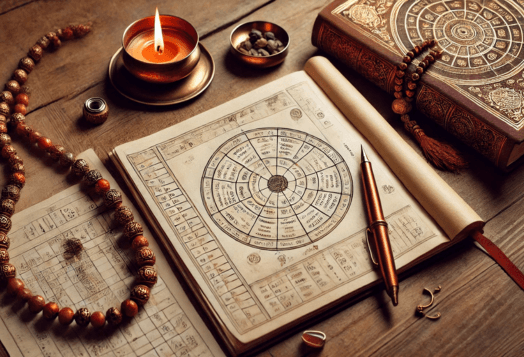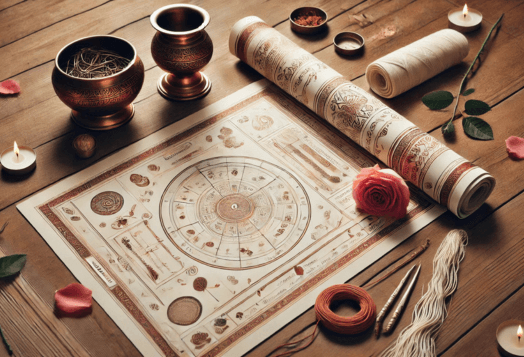
What Is Kundli Matching Really About?
Have you ever wondered why Kundli matching holds such a sacred place in Indian culture, especially when it comes to marriage? Learn how astrology guides your wedding date too. For centuries, astrologers have turned to the stars for guidance, using the detailed birth charts—or Kundlis—of two individuals to determine how compatible they are as life partners. But Kundli matching isn’t just about predicting love or fortune—it's a deep, spiritual process that considers personality alignment, emotional depth, and cosmic balance.
Today, many astrology enthusiasts and even skeptics are turning back to these ancient tools, seeking clarity before making one of the most important decisions of their lives: marriage.
How Kundli Matching Works in Vedic Astrology
Kundli matching, also called Guna Milan, is based on the Ashta Koota system—an intricate framework that analyzes eight core areas of compatibility between two individuals. Each area, or 'Koota', is assigned a score that contributes to a total compatibility score out of 36 points. The houses in your Kundli also influence compatibility. Here's how this celestial checklist unfolds:
1. Varna – Spiritual Alignment
This koota measures the spiritual nature and ego compatibility between partners. It checks whether both individuals are likely to grow together or face resistance on their spiritual paths.
2. Vashya – Influence and Control
It assesses who might dominate the relationship and how easily the two people can influence or adapt to one another—important for maintaining harmony.
3. Tara – Luck and Destiny
This part analyzes star compatibility, influencing health, prosperity, and longevity in the relationship.
4. Yoni – Physical and Emotional Compatibility
One of the most crucial aspects—it examines sensual and emotional chemistry. It also explores subconscious instincts, which are vital for lasting intimacy.
5. Graha Maitri – Intellectual Bond
This koota focuses on the mental compatibility, communication style, and emotional intelligence each partner brings into the relationship.
6. Gana – Temperament
Are you both adventurous? Quiet? Fiery? Gana evaluates these behavioral traits and how well they blend—or clash.
7. Bhakoot – Love and Relationship Harmony
This section determines emotional stability, love, affection, and overall bonding potential.
8. Nadi – Health and Genes
The most weighted koota (worth 8 points), Nadi checks biological compatibility, including chances for healthy offspring and energy balance between the partners.
To be considered astrologically compatible, a couple must score at least 18 out of 36 points. But don’t panic if your match falls below—it doesn’t always mean the relationship is doomed.
Curious About Your Compatibility? Try the Free Kundli Matching Calculator
While tools like our Kundli Matching Calculator provide quick insights, they’re just one part of the bigger picture. For a deeper understanding, it helps to consult with a verified astrologer who can interpret subtle planetary influences, doshas, and life paths in more detail.
What If Kundlis Don’t Match?

Not all charts align perfectly—and that's okay. If your Kundli score is low, astrologers often recommend remedial measures such as mantra chanting, gemstone therapy, or performing specific rituals to counteract doshas like Mangal Dosha.
However, keep in mind: Astrology offers guidance, not guarantees. Relationships are ultimately built on mutual understanding, patience, and love. A mismatched Kundli doesn’t mean the end—just that you may need to work a little harder on your relationship.
Kundli matching is more than just a Vedic tradition—it’s a beautiful way to bring awareness into your relationship, aligning emotional, mental, and spiritual energies before stepping into marriage.
If you're curious or considering marriage, don’t miss out on the clarity a Kundli match can offer.
Disclaimer: This blog is for informational and spiritual guidance only. Kundli matching is based on traditional beliefs, and results may vary. For accurate and personalized insights, always consult a verified astrologer. Use this tool as a supportive guide—not a substitute for personal judgment or professional advice.




